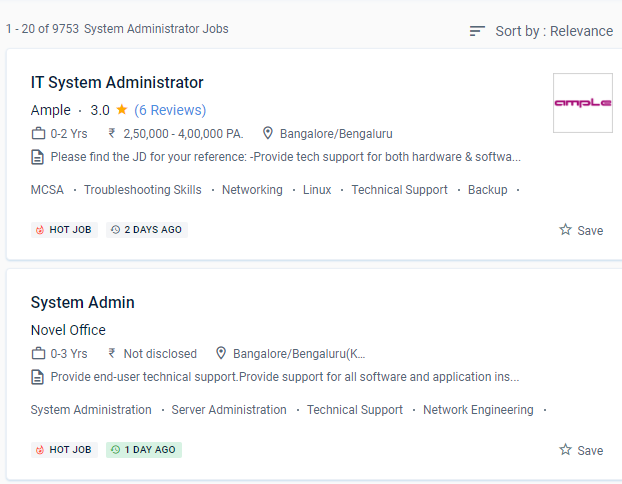System Administration Training by Experts
Our Training Process

System Administration - Syllabus, Fees & Duration
MODULE 1
- System administration introduction, policies, overview, UNIX history and basis
MODULE 2
- File systems and disks
MODULE 3
- Software installation concepts
MODULE 4
- Multi users basics, politics, policies and ethics
MODULE 5
- Automating administrative tasks
MODULE 6
- Networking
MODULE 7
- Backup and disaster recovery
MODULE 8
- DNS
MODULE 9
- SMTP, HTTP
MODULE 10
- Configuration management
MODULE 11
- Distributed computing
MODULE 12
- SNMP, monitoring
MODULE 13
- System security
This syllabus is not final and can be customized as per needs/updates





 .
For secure, high-speed Internet access, they connect routers, modems, and firewalls.
System administration roles are broad and often vary based on the type of computer system being managed, however, the majority of them have some fundamental functions that can be accomplished in a variety of ways.
To digitally connect clusters of computers, they create local area networks (LANs) and wide-area networks (WANs). It is their responsibility to ensure that computer systems and related services work smoothly.
They are IT-savvy and can troubleshoot any technical issues that are causing the system to malfunction.
They are in charge of producing IT policy recommendations for their organization.
The System Administration course in Raleigh will take you from working on a single machine to managing a complete fleet. We'll take a deep dive into the cloud, covering everything from common cloud infrastructure setups to cloud resource management.
When signals halt, system administrators alter cables to repair the transmission media.
.
For secure, high-speed Internet access, they connect routers, modems, and firewalls.
System administration roles are broad and often vary based on the type of computer system being managed, however, the majority of them have some fundamental functions that can be accomplished in a variety of ways.
To digitally connect clusters of computers, they create local area networks (LANs) and wide-area networks (WANs). It is their responsibility to ensure that computer systems and related services work smoothly.
They are IT-savvy and can troubleshoot any technical issues that are causing the system to malfunction.
They are in charge of producing IT policy recommendations for their organization.
The System Administration course in Raleigh will take you from working on a single machine to managing a complete fleet. We'll take a deep dive into the cloud, covering everything from common cloud infrastructure setups to cloud resource management.
When signals halt, system administrators alter cables to repair the transmission media.



















































































